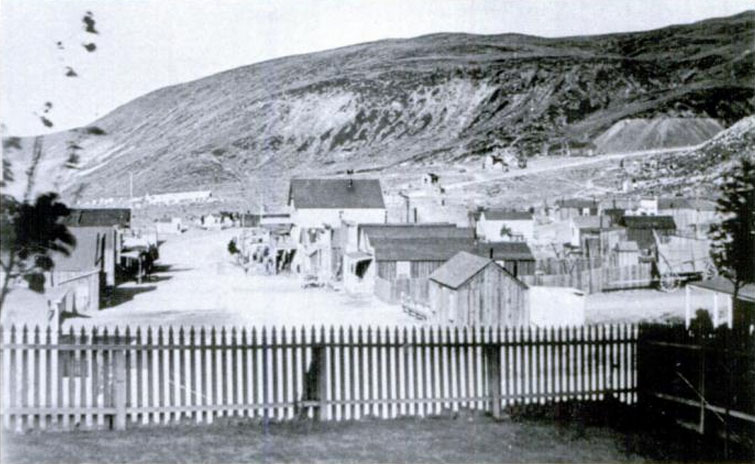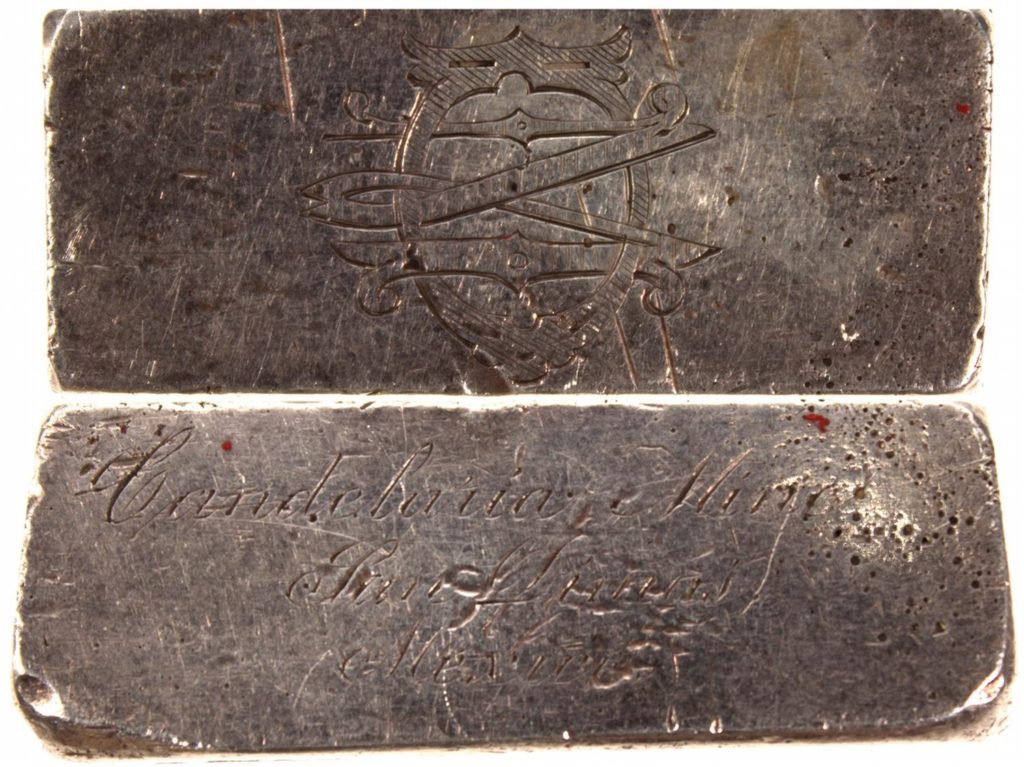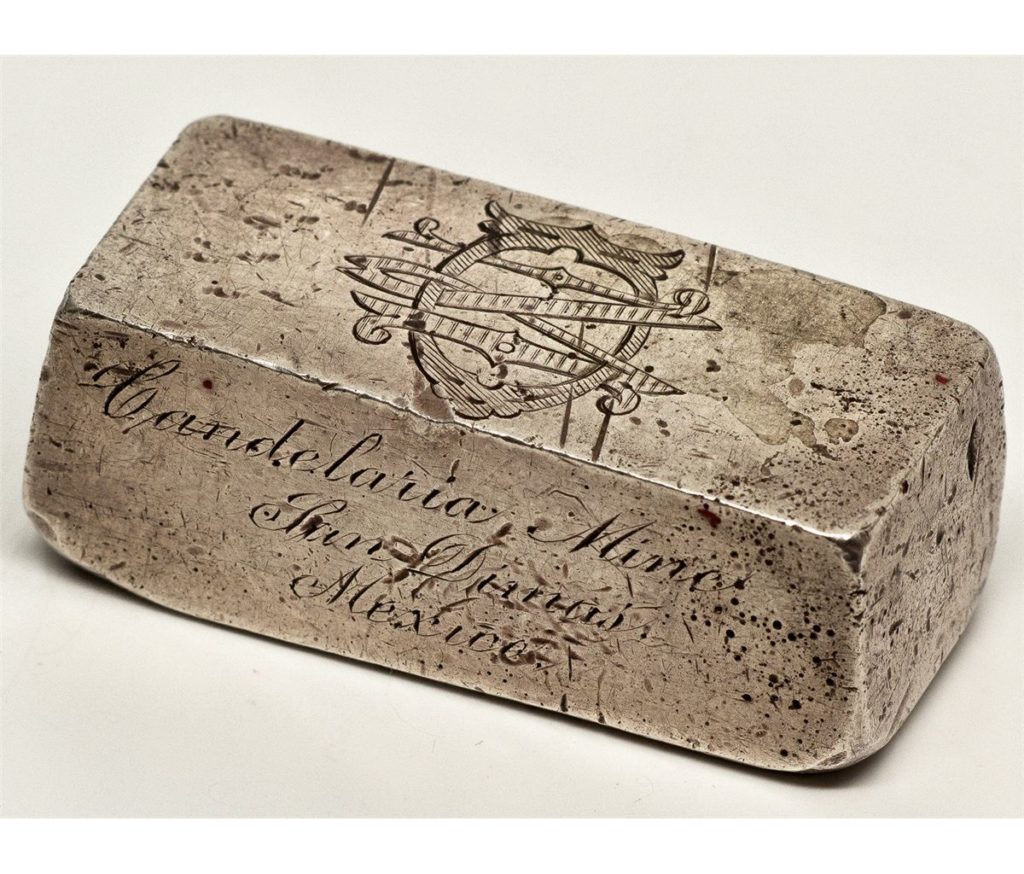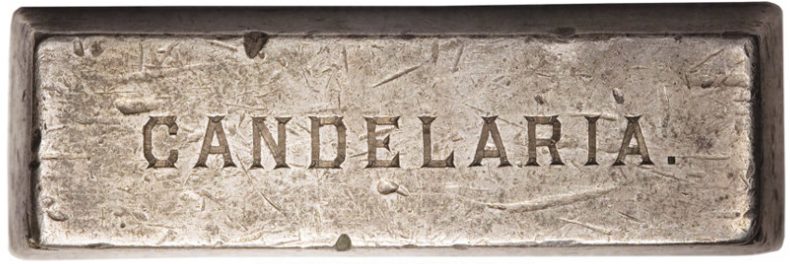The history of the mine is an interesting one besides being a long and heart wrenching one. The mine was first located in 1783 by Juan Jose Zambrano, who was a storekeeper. The mine was near San Dimas, a small town “on the Guarisamé River” [Paulsen, 1981, 245]. Zambrano “built three tunnels to facilitate removal of the ore which was in veins one and one-half to three yards wide” [Paulsen, 1981, 245] During his lifetime, Zambrano took silver and gold out of the mine amounting to somewhere between 55 million to about 100 million dollars. At the end of his life in 1807, Zambrano had millions in banks in England and owned a huge amount of property in Durango City. Despite its obvious record of producing wealth, the mine fell into disarray after Zambrano’s death. Mexican politics also changed after the 1810 revolution. Because the mine was inactive, Mexican law concerning abandoned mines left the mine open for non related people to take it over. Brothers Miguel de and Jose Vicente Laveaga became the next owners of the mine but did not operate it at its full potential due to water problems.

Above: 1895 view of Candelaria’s Main Street from the residence of W.A. Littell, Superintendent of the Candelaria Water Works & Milling Company.
Photo from Central Nevada Museum & Historical Society.
Mark Brumagim (later to be known as Birmingham) was a forty-niner, got a report on the mine in 1863. At the time, American miners were seeking other mining ventures in other places in South America, such as in Peru and Bolivia, hoping to create another Comstock rush like what had recently happened in Nevada. The report on the Candelaria said it had great potential because its “ore samples [from the dry portions of the mine] contained gold, virgin silver, and black or sulfuret silver, and indicated a yield ranging from $200 to $1,120 per ton in gold alone” [Paulsen, 1981, 246]. Brumagim and some fellow investors from San Francisco decided to form a corporation and buy the mine. In July of 1863, Brumagim and friends incorporated the La Candelaria Mining Company of San Francisco after signing a “rehabilitation” contract with “the Laveaga brothers, who transferred twenty-three of twenty-four shares . . . together with a right to work 5,249 feet of the lode” [Paulsen, 1981, 246]. A rehabilitation contract meant the company “would do what was necessary to” bring the mine into full operation once again [Paulsen, 1981, 246]. Joseph G. Rice, a man who was married to Brumagim’s sister, was hired on to manage the mine. However, things did not go as planned as the company had problems getting the water out of the mine. It also had to put money into modernizing its stamp mill. The company soon ran out of money and had to reorganize. It reorganized in New York as the Durango Silver Mining Company. Brumagim still held the Laveaga shares. In 1865 he also purchased the remaining share from the Laveaga brothers for “$5,500.” They moved to San Francisco. However, Rice made the deal for Brumagim, and the share remained in Rice’s name and was not immediately transferred to Brumagim. In 1866, after the 5th of May defeat of the French in Mexico, politics once again became unstable. The new company kept on spending money to rehabilitate the mine and it went into receivership in 1869. The company’s assets were sold at auction to the major shareholders of the Durango Mining Company of New York. Brumagim was one of the shareholders in the newly reformed company. Finally, “in 1880, sixteen years after Americans took control of the Candelaria, the drainage tunnel was finally completed” [Paulsen, 1981, 250]. The mine was not able to produce enough product to turn a profit. The investors were highly disappointed and “negotiated a renewable three-year lease with Columbus Waterhouse and Associates of San Francisco” [Paulsen, 1981, 250]. The Waterhouse people also retained an option to purchase the mine. They poured more money into the mine by adding “several miles of compressed-air pipe for drilling and ventilation” [Paulsen, 1981, 251]. Waterhouse also built a tramway, new crushing mills, and instituted “a more efficient amalgamation process” [Paulsen, 1981, 251]. By 1886, the mine had not produced any profits for its investors even though the mine was producing bullion and selling it. It was at this juncture that Brumagim was swindled out of his mine.
Otto Braunsdorf was the new mine manager after Rice. Waterhouse wanted to have the mine free and clear. Braunsdorf suggested that the Waterhouse’s managing director, Henry Weil, “denounce” the mine – that is declare it to be abandoned. However, denunciating a fully working mine was illegal under Mexican law. Nevertheless, Daniel M. Burns, “Waterhouse’s general manager in the San Dimas district, [decided to take] direct action. He filed a petition with Ramon Castro, the local political chief and federal mining agent, denouncing the Candelaria. Burns alleged that the mine and its annexes along 3,200 meters of the lode had been abandoned. The New York company directors, upon Waterhouse’s request, voted in May, without stockholder approval, to sell the Candelaria to him. Castro promptly accepted the reports of two mining experts, both employed by Burns, confirming the abandonment of the mine, and officially recognized Burns as its owner” [Paulsen, 1981, 252].
After finding out about the swindle, Brumagim spent the next years of his life trying to get his mine and the profits it finally realized returned to him. He started pursuing his goals in the U. S. court system and went through both the civil and criminal court systems in Mexico. He appealed to foreign diplomats as well as the U. S. ambassadors to Mexico without much luck. His sister even signed an affidavit in her capacity as the administratrix of her husband’s estate saying Brumagim was the true owner of the last Laveaga share. Nothing Brumagim did seemed to work. He had a good case. The Mexican Mining Law Code of 1884 in its Article 72 stated that mine managers could not denounce “other mines within 800 meters of his own, unless he did so for the owner. Because Burns had ‘fraudulently denounced’ the Candelaria for Waterhouse, he had violated his company’s lease” [Paulsen, 1981, 257]. Brugamim was still trying to pursue his day in court at the start of the 1910 Mexican Revolution. Brugamin died in 1914 not having realized his dreams of regaining ownership of the mine and getting recompensed for the millions he was cheated out of. However, “in 1917, the regime of President Venustiano Carranza nullified various decrees and decisions [made] between February of 1913 and September of 1914, including the decision to deny the Birmingham company possession of the property. In December of 1917 the Federal District Court in Mexico City finally declared the fraudulent denunciation null and void. The Candelaria Gold and Silver Mining Company was authorized to take possession of the mine, subject to Article 27 of the new Constitution of 1917 which nationalized subsoil deposits.
While the company was pleased to have the denunciation voided, it refused to take possession subject to Article 27, preferring to pursue its claim for losses against the Mexican government. For reasons that are not entirely clear, the claim was never adjudicated. It was pending as late as 1937, at which time the United States claims commissioner was attempting to locate the company’s stockholders. As a result, the Candelaria remained in the hands of Burns and his Consolidated Candelaria Company. Perhaps Birmingham was fortunate in being spared the frustrations incurred by other American investors in Mexican properties who had to contend in the 1920s with the issue over retroactive application of the provisions of Article 27” [Paulsen, 1981, 265]. Ultimately, the Candelaria story reflects the conflicts and troubles Americans had with investing in South American properties. There was political unrest, changing rules, and difficulties in negotiating between the U.S. And other countries’ laws [Paulsen, “The Legal Battle for the Candelaria Mine in Durango, Mexico, 1890-1917,” Journal of the Southwest, pp. 243-266, Vol. 23, No. 3 (Autumn, 1981)].
Candelaria Mine Silver Ingot, San Dimas, Mexico 1885-1900


Top obverse 21 mm by 50 mm engraved and inscrolled with beautiful calligraphy. It has the inscription “DM” in fanciful capital lettering. The right side is 19 mm by 52 mm inscribed with calligraphy is “Candelaria Mine, San Dimas, Mexico.” Burns is noted to have been the president of the mine at the turn of the twentieth century. However, this ingot has no inscription date. The weight is 204.7 grams. A similar piece sold at Stacks in January of 2001. The mine produced a large amount of silver and gold. The main office for the mine was in San Francisco. Inscription of the president’s initials on the ingot indicates his pride of ownership. At the turn of the century, ingots may have been provided to a handful of company investors to create excitement and show the successful growth of the mine.
This wonderful silver ingot is obviously a presentation piece with an elegant engraving on the top and engraved lettering on one side. It originates from the Candelaria Mine, Tayoltita, San Dimas District, Mun. de San Dimas, Durango, Mexico. Daniel M. Burns was the president of Candelaria Consolidated and also of Contra Estaca Consolidated Mexican Mining Co. According to San Francisco directories of the period, their office was in the Crocker building in San Francisco beginning in the 1890s. The mine for the company was located in San Dimas, Mexico and was a large producer of gold and silver. Their stamp mills and pan amalgamation system was increased in 1902. In 1901 the company sold much of their ore to ASARCO in El Paso. Burns’ mining interests in Mexico included the Candelaria Consolidated Mexican Mining Company and its associated mines of Rio Vista and Vista del Mar.
George Gale, one-time Governor of California, was Burns’ business partner. Daniel M. Burns was born in Mississippi in 1846. His father, William Burns, was a well-to-do rancher and farmer. The senior Burns died en route to Oregon in 1847. Burns’ mother died in Sacramento two years later. Young Burns was raised by W. A. Selkirk, a man engaged in mining at Independence Hill, California. Burns began to earn his own livelihood as a cattle rancher in 1855. During the Civil War, he served the Fourth California Regiment in Arizona. On his return to California, he continued ranching and later ran a hotel in Woodland. He served two terms as Yolo County Clerk before being elected Secretary of State for California in 1879. In 1883, he began mining operations in Mexico. He was president of the Candelaria Consolidated Mexican Mining Company with mines at San Dimas. In 1889 he returned to California and settled in San Francisco, where he served as police commissioner and was active in Republican party politics.
[06/2011] https://www.icollector.com/Candelaria-Mine-Silver-Ingot-San-Dimas-Mexico-1885-1900_i10768707 ($2,937)
[08/2012] https://www.icollector.com/Candelaria-Mine-Silver-Ingot-Mexico-San-Dimas-Durango-1885-1900-2012aug-Numismatic_i13391263 ($5,377)
6.6 oz Mexico,San Dimas – 1902 – Candelaria Mine Silver Ingot


This wonderful silver ingot is a presentation piece is inscribed: “ COMPLIMENTS OF D.M. BURNS, JUNE 1902.” Daniel M. Burns was the president of Candelaria Consolidated and also of Contra Estaca Consolidated Mexican Mining Co. According to San Francisco directories of the period, their office was in the Crocker building in San Francisco beginning in the 1890s.
The mine for the company was located in San Dimas, Mexico and was a large producer of gold and silver. Their stamp mills and pan amalgamation system was increased the year this ingot was made. In 1901 the company sold much of their ore to ASARCO in El Paso.
Burns may have given this ingot to a San Francisco investor in the company on the eve of the completion of the mill expansion.
Provenance: HKA Fall 2006 Featuring The Bass Collection & Stack’s 1/01
[10/2010] https://www.icollector.com/Mexico-San-Dimas-1902-Candelaria-Mine-Silver-Ingot-6-6oz-Inscribed-COMPLIMENTS-OF-D-M-BURNS_i9798775 ($3,120)
Candelaria Presentation Silver Ingot. 6.6 Ounces. This presentation ingot was produced from silver mined in San Dimas, Mexico. Most likely it commemorated the completion of the mill expansion in 1902 and was probably given to a San Francisco investor. The top side of this small, trapezoidal-shaped ingot reads: CANDELARIA. The bottom side is inscribed: COMPLIMENTS OF / COLO. D.M. BURNS /JUNE 1902. A one-of-a-kind item from this important gold and silver mine. Measures: 18 x 56 mm.
[01/2008] https://coins.ha.com/itm/ingots/candelaria-presentation-silver-ingot-66-ounces/a/454-5845.s (Passed; Reserve: $6,000)
